Click here to subscribe and get instant access to read this report.
Click here to check your existing subscription status.
Existing members, login below:

Click here to subscribe and get instant access to read this report.
Click here to check your existing subscription status.
Existing members, login below:
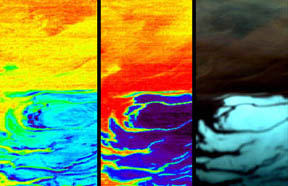
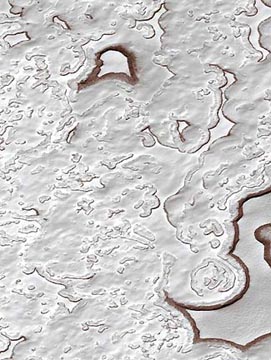

February 23, 2004 Pasadena, California - The stated goal of the Mars rover missions is to look for evidence of water that might once have flowed in rivers, pooled in lakes, or even created an ocean on the red planet. Photographs like the branching delta below taken by the Mars Orbiter Camera suggest a large flow of water.
Click here to subscribe and get instant access to read this report.
Click here to check your existing subscription status.
Existing members, login below:
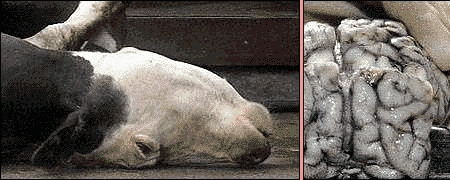
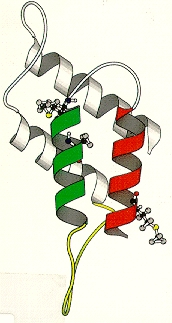
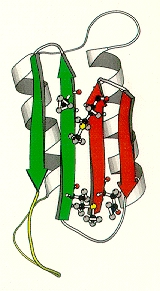
February 19, 2004 San Francisco, California - "Mad cow" disease once thought to be confined to England has spread to other countries the past few years, including most recently herds in Canada and Washington State. And this week came another disturbing discovery: Italian researchers have found a second type of deadly prion disease in cattle that closely resembles the prion proteins that sporadically and spontaneously attack and kill humans in what is called Creutzfeldt-Jakob Disease, or CJD. That means controlling what goes into cattle feed won't stop all mad cow disease - and that there are even more deadly prions in the food chain than anyone knew until now.
Click here to subscribe and get instant access to read this report.
Click here to check your existing subscription status.
Existing members, login below:
February 20, 2004 Pasadena, California - Only one month ago, the Mars Rover called Spirit started working inside the Gusev crater and extended its robotic arm for the first time toward that large pyramid-shaped rock, "Adirondack," to find out what it was made of.

The answer is dark volcanic basalt beneath a dusty coating of red iron dust. In fact, many rocks in the Gusev crater seem to be basalt and scientists are trying to figure out if they came from a volcanic eruption IN the crater? Or were carried by a river of water into the crater long ago? Or maybe were even blown into the crater by strong Martian winds?
Click here to subscribe and get instant access to read this report.
Click here to check your existing subscription status.
Existing members, login below:

February 18, 2004 Pasadena, California - The NASA/JPL Martian rovers, Spirit and Opportunity, each came down near the Martian equator about 6,600 miles apart protected inside many inflated airbags. Each airbag was about 13 feet (4 meters) in diameter and had a stitched pattern of a ring with lines radiating from it. The idea was that each lander would be dropped from its orbiting spacecraft and fall to a bouncing landing inside the airbags. Soon after Opportunity came to rest on January 25, 2004, the rover's panoramic camera took a 360 degree image of the shallow crater surrounding it on the Meridiani Planum near the Martian equator.
Click here to subscribe and get instant access to read this report.
Click here to check your existing subscription status.
Existing members, login below:
Click here to subscribe and get instant access to read this report.
Click here to check your existing subscription status.
Existing members, login below:
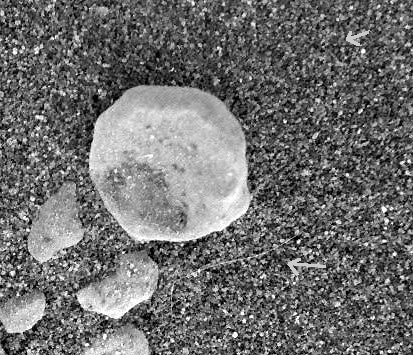
February 14, 2004 Tempe, Arizona - The NASA/JPL rover called Opportunity has been rolling along the light-colored bedrock in the Meridiani Planum taking spectrometer measurements of the rocks and stopping here and there to examine closely the soil through its microscopic imager (MI).
Click here to subscribe and get instant access to read this report.
Click here to check your existing subscription status.
Existing members, login below:
February 14, 2004 Jackson, Michigan - Since the middle of December, residents of Horton and Napoleon, Michigan, south of Jackson and west of Ann Arbor, have seen some very strange lights and objects in the sky. Another mystery was a large, nearly perfectly round ice circle discovered on December 28th at Mud Lake near Horton. The ice circle was probably created by Nature, but a local resident saw a bright light over the lake.
As recently as Saturday, February 7, and three nights before on February 4, a Jackson, Michigan, resident videotaped unidentified objects and sent me copies of the tapes to see. The man is a professional who works in computer technology support and has asked that I not use his real name. He asked me to call him "John." John is 36-years-old and has lived in Jackson, Michigan, all his life. He remembers seeing bizarre diamond-shaped, oval-shaped and triangular-shaped craft and large orange lights back in 1992 when there was a UFO flap over Napoleon. But he hasn't seen any strange aerial lights since then until now.
He and other residents from the Napoleon, Horton, Litchfield area of Michigan south of Jackson have repeatedly seen unidentified lights. In John's videotape, a very bright light that seems somewhat stationary begins the sequence of events that went from 9 p.m. to about 9:50 p.m. EST.
Click here to subscribe and get instant access to read this report.
Click here to check your existing subscription status.
Existing members, login below:
To be more computer-upload-friendly, the reprints will be divided into parts. Here begins Part 14 of Status Report VII, from February 1994.
(Continued ) The Macabre Case of "Agent" Robert L. Malone
Mrs. Robert Malone's Interview Comments Continue from Part 13:
1958: Bob was the 'consummate man' - all man. He was a hero. He was a he-man. He was tough and dedicated to the Corps and the right which, in his mind, was anything pro-America. But he was also very tender and nurturing. In uniform, he was tough, but never without a cause. He was an admirable man of many talents and deep convictions. I was proud of my husband.
Click here to subscribe and get instant access to read this report.
Click here to check your existing subscription status.
Existing members, login below:
"While imprisoned in a Nazi concentration camp, (we) witnessed low-level UFOs over the camp, even alarming the German authorities."
- Mrs. Robert Lee Malone

To be more computer-upload-friendly, the reprints will be divided into parts. Here begins Part 13 of Status Report VII, from February 1994.
The Macabre Case of "Agent" Robert Lee Malone
Here is still another sobering, high-intrigue case slinking its way out of the Hall of Mirrors that defies any cut-and-dry explanation. With so many key details missing, I would have dismissed the case had it not been for the 6 months of prior, in-depth investigation by Georgeanne Cifarelli of San Marino, California, who is MUFON's Assistant State Director for Southern California.
Click here to subscribe and get instant access to read this report.
Click here to check your existing subscription status.
Existing members, login below:
